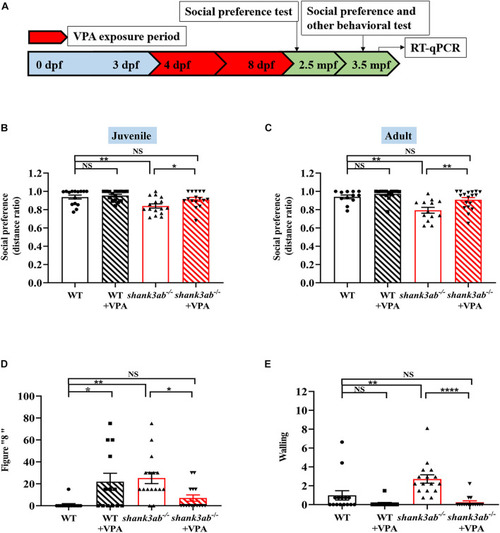- Title
-
Social Deficits and Repetitive Behaviors Are Improved by Early Postnatal Low-Dose VPA Intervention in a Novel shank3-Deficient Zebrafish Model
- Authors
- Liu, C., Wang, Y., Deng, J., Lin, J., Hu, C., Li, Q., Xu, X.
- Source
- Full text @ Front. Neurosci.
|
Generation of |
|
Morphological characteristics and locomotion activity alteration in |
|
Core behavioral features of ASD-like displayed in |
|
|
|
Improved ASD core symptoms in |
|
Increased |






